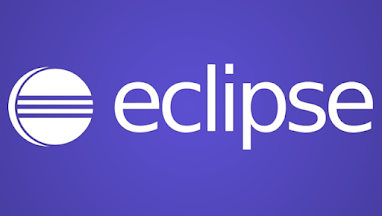How to install Eclipse? Now application development can be done by anyone in ways that are not too difficult because there are already many open source applications that can be used. One such application is called Eclipse. This program is specifically designed to be used to build applications that can later be integrated such as mobile, websites, and so on.
Eclipse is an open source program so you can use it for free and don't have to pay any fees. This application is also usually used to develop a Java-based application that can allow developers or developers to create a customized developer environment or IDE.
Usually Eclipse will be taught if you take an android course. Maybe you will also get an Eclipse stamp if you later take a major that is always related to applications or software.
How to Install Eclipse Until Complete
1. First of all, you need to download the Eclipse installer through the following link. JDK is also required to install Eclipse (Download here if you haven't installed it). If you do not install the JDK, the Eclipse installation process will experience an error.
2. After installing the JDK, please double click the Eclipse installer. A display similar to the image below will appear. Then select Eclipse IDE for Java Developers.
3. After that select Install.
4. Next select Accept Now.
5. Then tick Remember accepted licenses and select Accept.
6. Wait for the installation process to complete.
7. If a window like the image below appears, check everything and select Accept selected.
8. Eclipse installation process is complete.
A Brief History of Eclipse
You need to know that Eclipse was first introduced around 2000 by one of the largest IT companies, namely IBM. The company is known to have contributed approximately 3 million lines of code derived from their Java tools. The reason for the creation of Eclipse is to help build an open source IDE community so that it will be able to complement Apache.
This application is known to also provide a general interface (UI) model that can work with other tools. Eclipse is also made so that it can be used by several well-known operating systems that are often used so that later users will have no trouble when they want to use Eclipse. In addition, plug-ins are also used for the Eclipse portable API program and can be changed on any of the operating systems that support it.
Until now Eclipse is still one of the most favorite IDE. The main reason is because this application is open source so you don't have to pay if you want to download or use it.
The meaning of open source here means that anyone can see the programming code in Eclipse. Another reason that makes Eclipse one of the most widely used is because it provides convenience when you want to develop components called plug-ins.
Eclipse Properties and Characteristics
As we explained earlier, Eclipse is a software IDE (Integrated Development Environment) that is used to develop various applications that can later be run on all platforms or are platform-independent.
Eclipse has at least 3 properties, including:
- Multi-platform: for the target operating system from Eclipse including: Linux, Windows, AIX, Solaris, Mac OS X, HP-UX.
- Multi language: basically Eclipse was developed using the Java programming language. Even so, this program also supports several programming languages that are widely used today, such as Python, Cobol, C++/C, PHP, Perl, and several other programming languages.
- Multi-role: apart from being used as an IDE for application development, Eclipse can also be used for various activities in the software development cycle, such as documentation, web development, software testing, and others.



